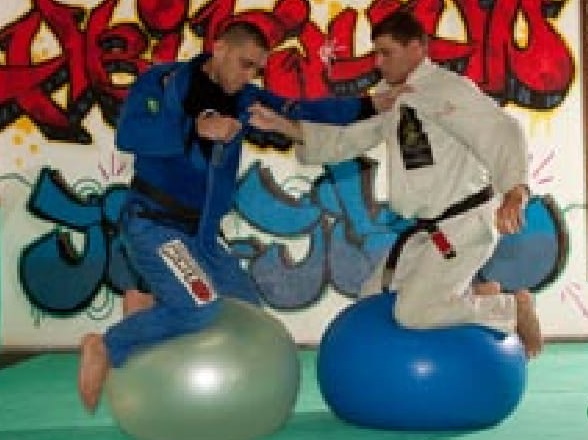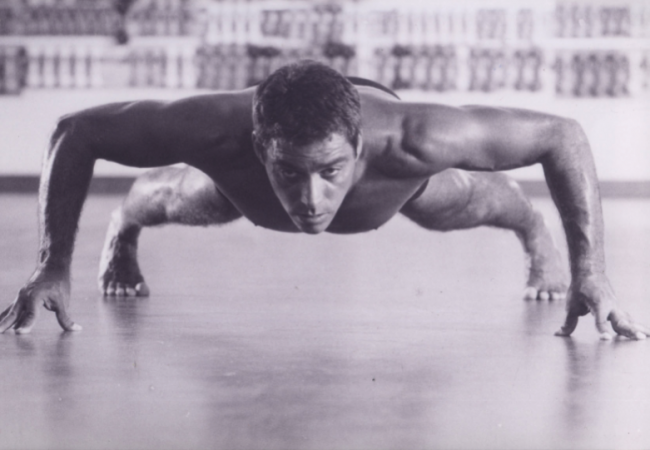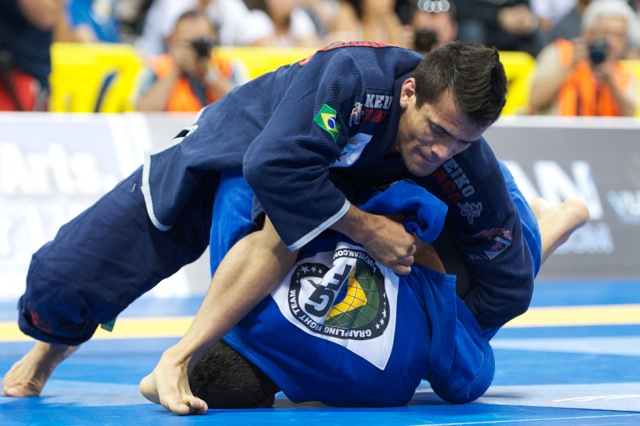[First published in 2008. Scroll down for plain text. Part of the Training for Warriors series, by Martin Rooney*]
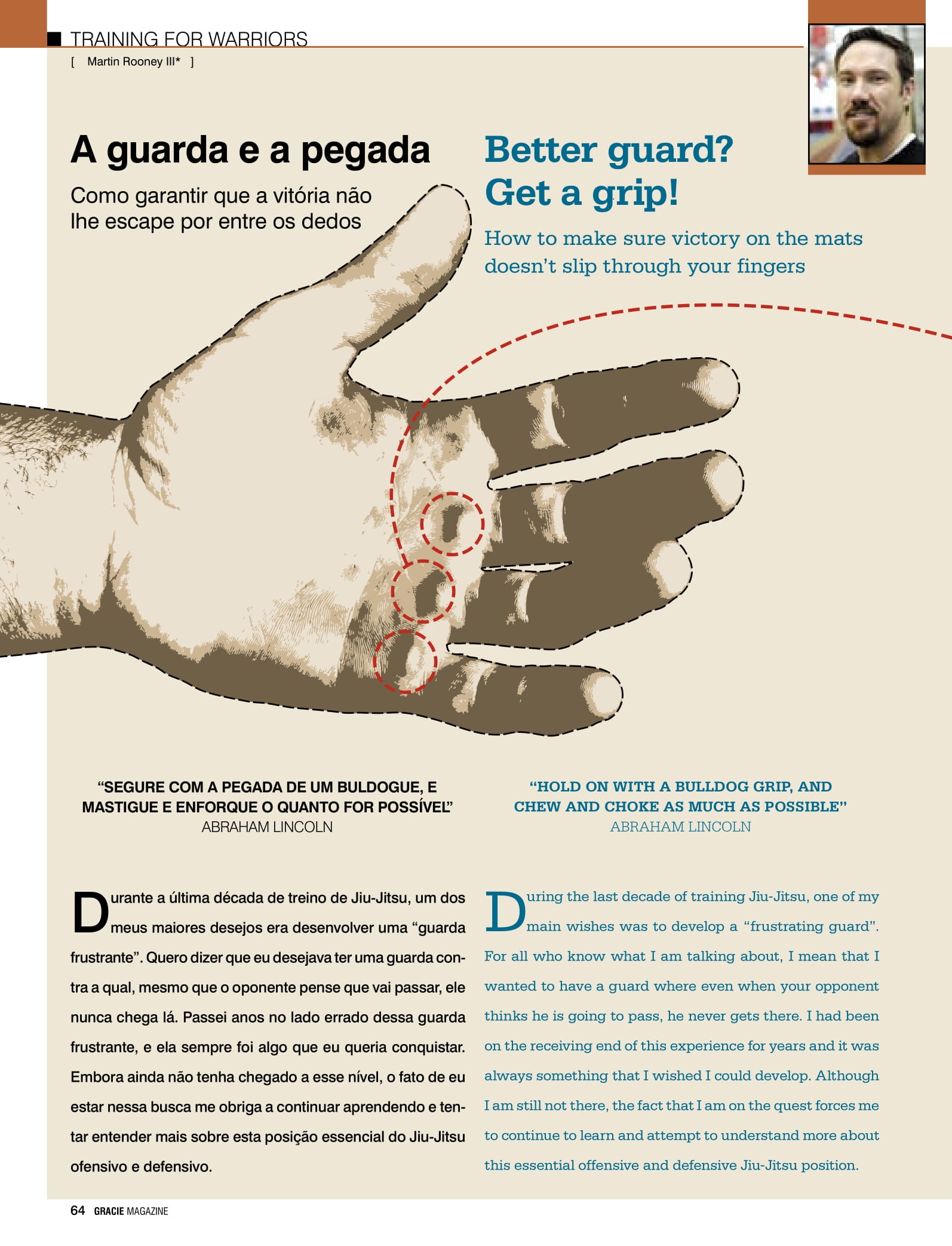
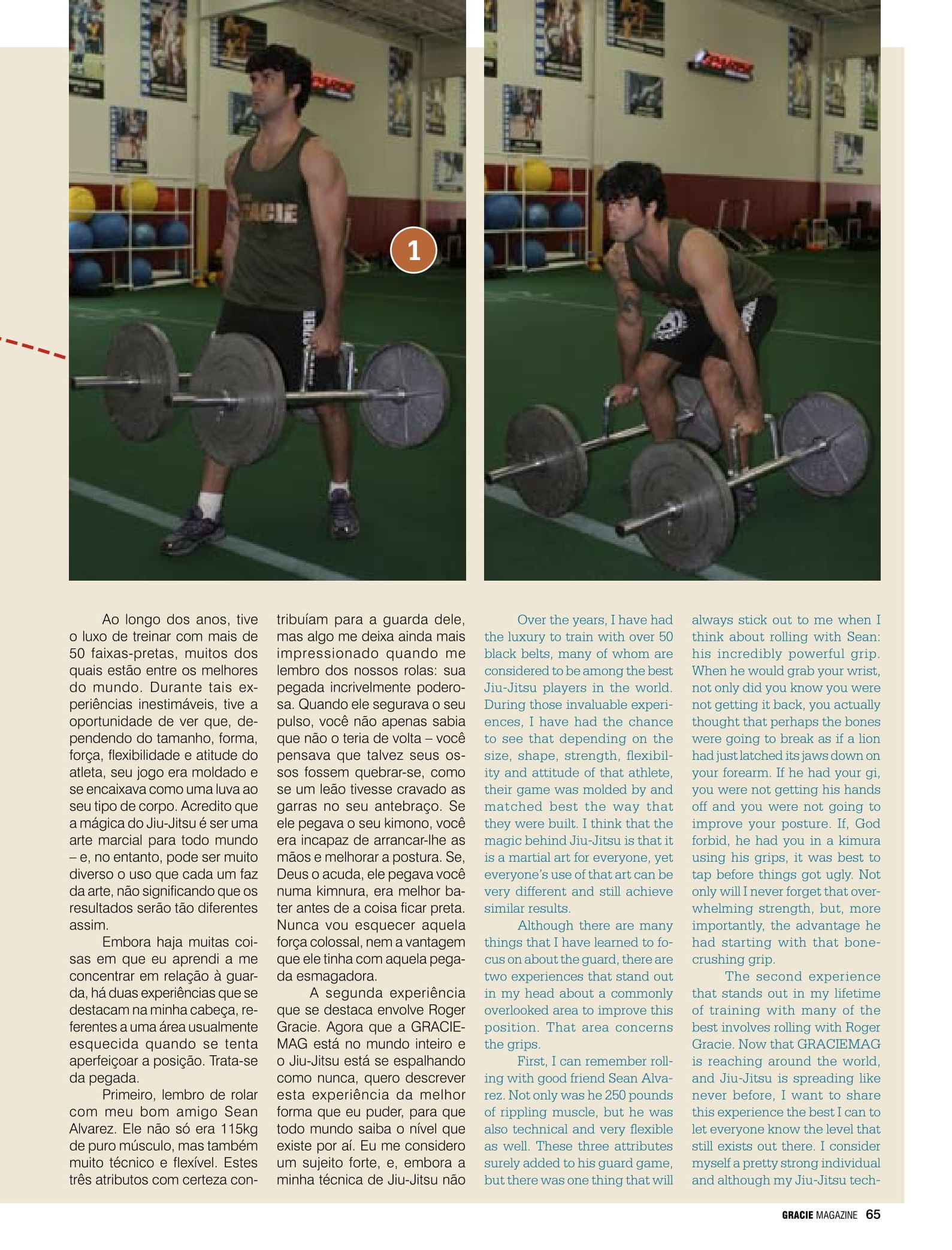
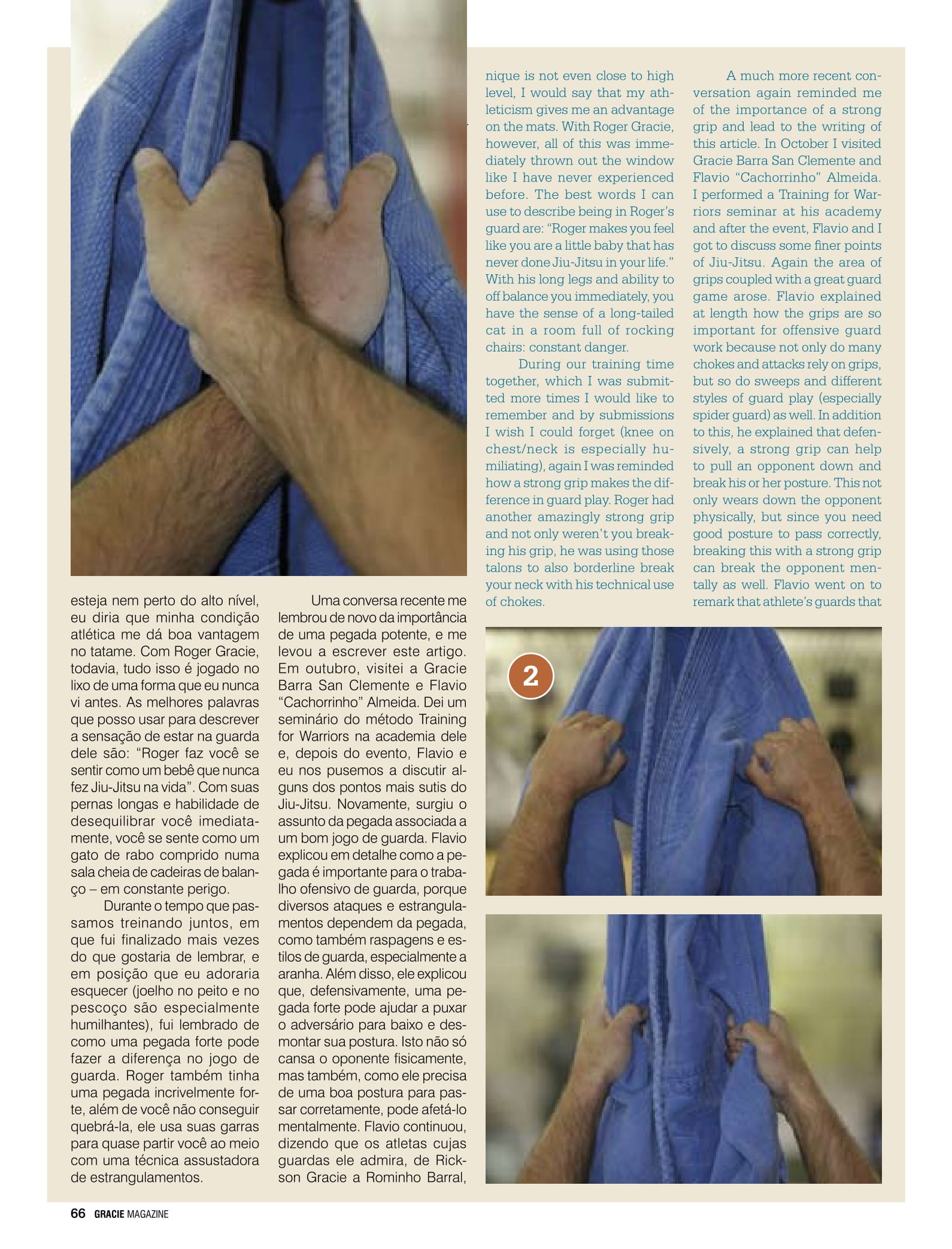
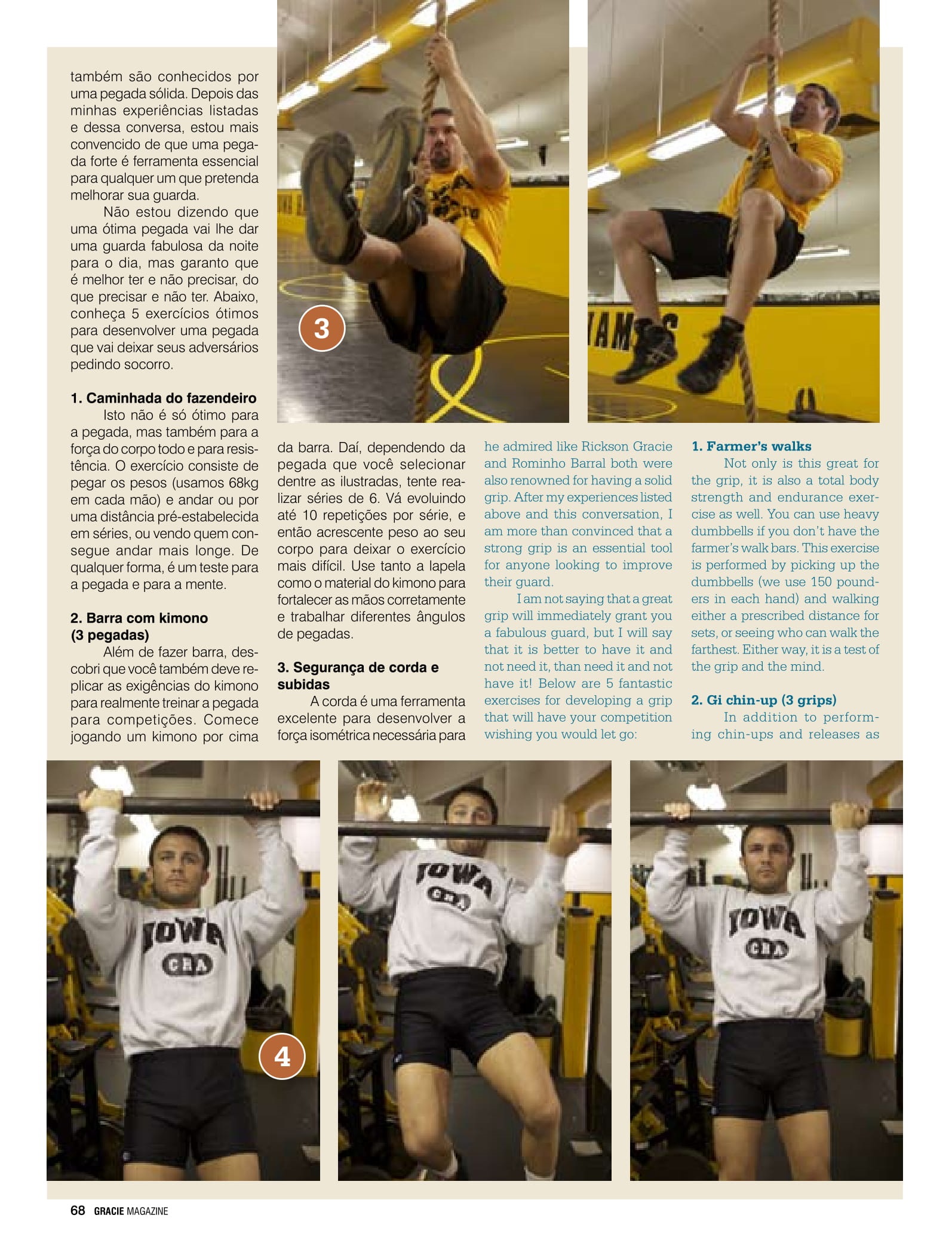
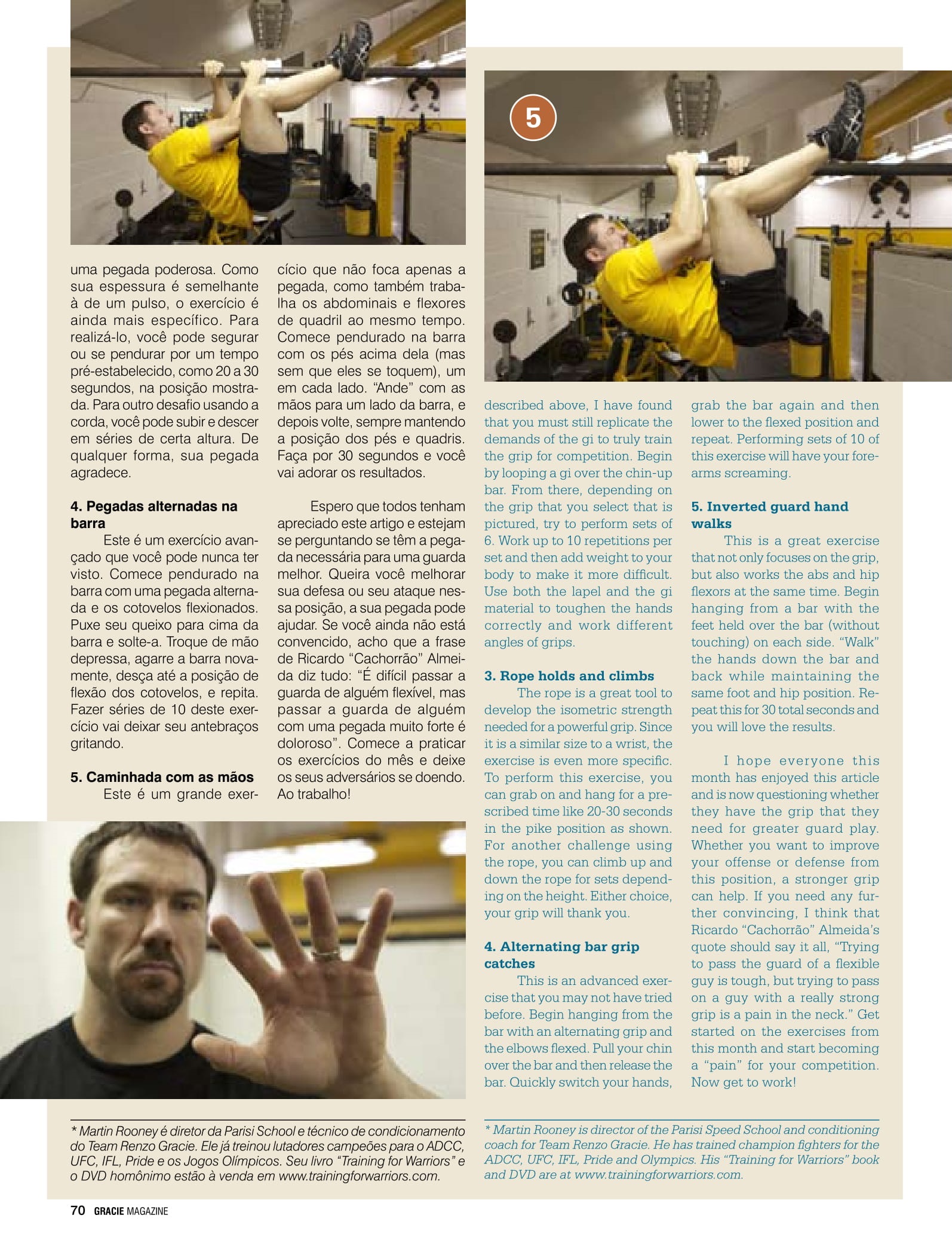
During the last decade of training Jiu-Jitsu, one of my
main wishes was to develop a “frustrating guard”.
For all who know what I am talking about, I mean that I
wanted to have a guard where even when your opponent
thinks he is going to pass, he never gets there. I had been
on the receiving end of this experience for years and it was
always something that I wished I could develop. Although
I am still not there, the fact that I am on the quest forces me
to continue to learn and attempt to understand more about
this essential offensive and defensive Jiu-Jitsu position.
Over the years, I have had
the luxury to train with over 50
black belts, many of whom are
considered to be among the best
Jiu-Jitsu players in the world.
During those invaluable experiences,
I have had the chance
to see that depending on the
size, shape, strength, flexibility
and attitude of that athlete,
their game was molded by and
matched best the way that
they were built. I think that the
magic behind Jiu-Jitsu is that it
is a martial art for everyone, yet
everyone’s use of that art can be
very different and still achieve
similar results.
Although there are many
things that I have learned to focus
on about the guard, there are
two experiences that stand out
in my head about a commonly
overlooked area to improve this
position. That area concerns
the grips.
First, I can remember rolling
with good friend Sean Alvarez.
Not only was he 250 pounds
of rippling muscle, but he was
also technical and very flexible
as well. These three attributes
surely added to his guard game,
but there was one thing that will
always stick out to me when I
think about rolling with Sean:
his incredibly powerful grip.
When he would grab your wrist,
not only did you know you were
not getting it back, you actually
thought that perhaps the bones
were going to break as if a lion
had just latched its jaws down on
your forearm. If he had your gi,
you were not getting his hands
off and you were not going to
improve your posture. If, God
forbid, he had you in a kimura
using his grips, it was best to
tap before things got ugly. Not
only will I never forget that overwhelming
strength, but, more
importantly, the advantage he
had starting with that bonecrushing
grip.
The second experience
that stands out in my lifetime
of training with many of the
best involves rolling with Roger
Gracie. Now that GRACIEMAG
is reaching around the world,
and Jiu-Jitsu is spreading like
never before, I want to share
this experience the best I can to
let everyone know the level that
still exists out there. I consider
myself a pretty strong individual
and although my Jiu-Jitsu tech-
nique is not even close to high
level, I would say that my athleticism
gives me an advantage
on the mats. With Roger Gracie,
however, all of this was immediately
thrown out the window
like I have never experienced
before. The best words I can
use to describe being in Roger’s
guard are: “Roger makes you feel
like you are a little baby that has
never done Jiu-Jitsu in your life.”
With his long legs and ability to
off balance you immediately, you
have the sense of a long-tailed
cat in a room full of rocking
chairs: constant danger.
During our training time
together, which I was submitted
more times I would like to
remember and by submissions
I wish I could forget (knee on
chest/neck is especially humiliating),
again I was reminded
how a strong grip makes the difference
in guard play. Roger had
another amazingly strong grip
and not only weren’t you breaking
his grip, he was using those
talons to also borderline break
your neck with his technical use
of chokes.
A much more recent conversation
again reminded me
of the importance of a strong
grip and lead to the writing of
this article. In October I visited
Gracie Barra San Clemente and
Flavio “Cachorrinho” Almeida.
I performed a Training for Warriors
seminar at his academy
and after the event, Flavio and I
got to discuss some finer points
of Jiu-Jitsu. Again the area of
grips coupled with a great guard
game arose. Flavio explained
at length how the grips are so
important for offensive guard
work because not only do many
chokes and attacks rely on grips,
but so do sweeps and different
styles of guard play (especially
spider guard) as well. In addition
to this, he explained that defensively,
a strong grip can help
to pull an opponent down and
break his or her posture. This not
only wears down the opponent
physically, but since you need
good posture to pass correctly,
breaking this with a strong grip
can break the opponent mentally
as well. Flavio went on to
remark that athlete’s guards that
he admired like Rickson Gracie
and Rominho Barral both were
also renowned for having a solid
grip. After my experiences listed
above and this conversation, I
am more than convinced that a
strong grip is an essential tool
for anyone looking to improve
their guard.
I am not saying that a great
grip will immediately grant you
a fabulous guard, but I will say
that it is better to have it and
not need it, than need it and not
have it! Below are 5 fantastic
exercises for developing a grip
that will have your competition
wishing you would let go:
1. Farmer’s walks
Not only is this great for
the grip, it is also a total body
strength and endurance exercise
as well. You can use heavy
dumbbells if you don’t have the
farmer’s walk bars. This exercise
is performed by picking up the
dumbbells (we use 150 pounders
in each hand) and walking
either a prescribed distance for
sets, or seeing who can walk the
farthest. Either way, it is a test of
the grip and the mind.
2. Gi chin-up (3 grips)
In addition to performing
chin-ups and releases as
described above, I have found
that you must still replicate the
demands of the gi to truly train
the grip for competition. Begin
by looping a gi over the chin-up
bar. From there, depending on
the grip that you select that is
pictured, try to perform sets of
6. Work up to 10 repetitions per
set and then add weight to your
body to make it more difficult.
Use both the lapel and the gi
material to toughen the hands
correctly and work different
angles of grips.
3. Rope holds and climbs
The rope is a great tool to
develop the isometric strength
needed for a powerful grip. Since
it is a similar size to a wrist, the
exercise is even more specific.
To perform this exercise, you
can grab on and hang for a prescribed
time like 20-30 seconds
in the pike position as shown.
For another challenge using
the rope, you can climb up and
down the rope for sets depending
on the height. Either choice,
your grip will thank you.
4. Alternating bar grip
catches
This is an advanced exercise
that you may not have tried
before. Begin hanging from the
bar with an alternating grip and
the elbows flexed. Pull your chin
over the bar and then release the
bar. Quickly switch your hands,
grab the bar again and then
lower to the flexed position and
repeat. Performing sets of 10 of
this exercise will have your forearms
screaming.
5. Inverted guard hand
walks
This is a great exercise
that not only focuses on the grip,
but also works the abs and hip
flexors at the same time. Begin
hanging from a bar with the
feet held over the bar (without
touching) on each side. “Walk”
the hands down the bar and
back while maintaining the
same foot and hip position. Repeat
this for 30 total seconds and
you will love the results.
I hope everyone this
month has enjoyed this article
and is now questioning whether
they have the grip that they
need for greater guard play.
Whether you want to improve
your offense or defense from
this position, a stronger grip
can help. If you need any further
convincing, I think that
Ricardo “Cachorrão” Almeida’s
quote should say it all, “Trying
to pass the guard of a flexible
guy is tough, but trying to pass
on a guy with a really strong
grip is a pain in the neck.” Get
started on the exercises from
this month and start becoming
a “pain” for your competition.
Now get to work!
* Martin Rooney is the founder of the Training for Warriors system and has trained champion fighters for the UFC, Pride, ADCC and Olympics. His TFW fitness program is used in over 175 facilities in 25 countries around the world. Information about TFW certifications at trainingforwarriors.com.



